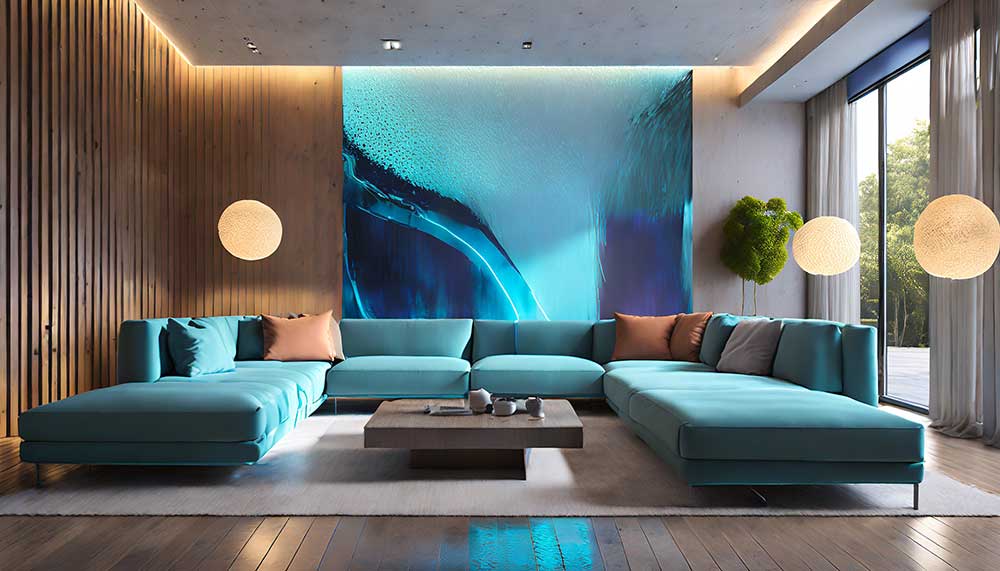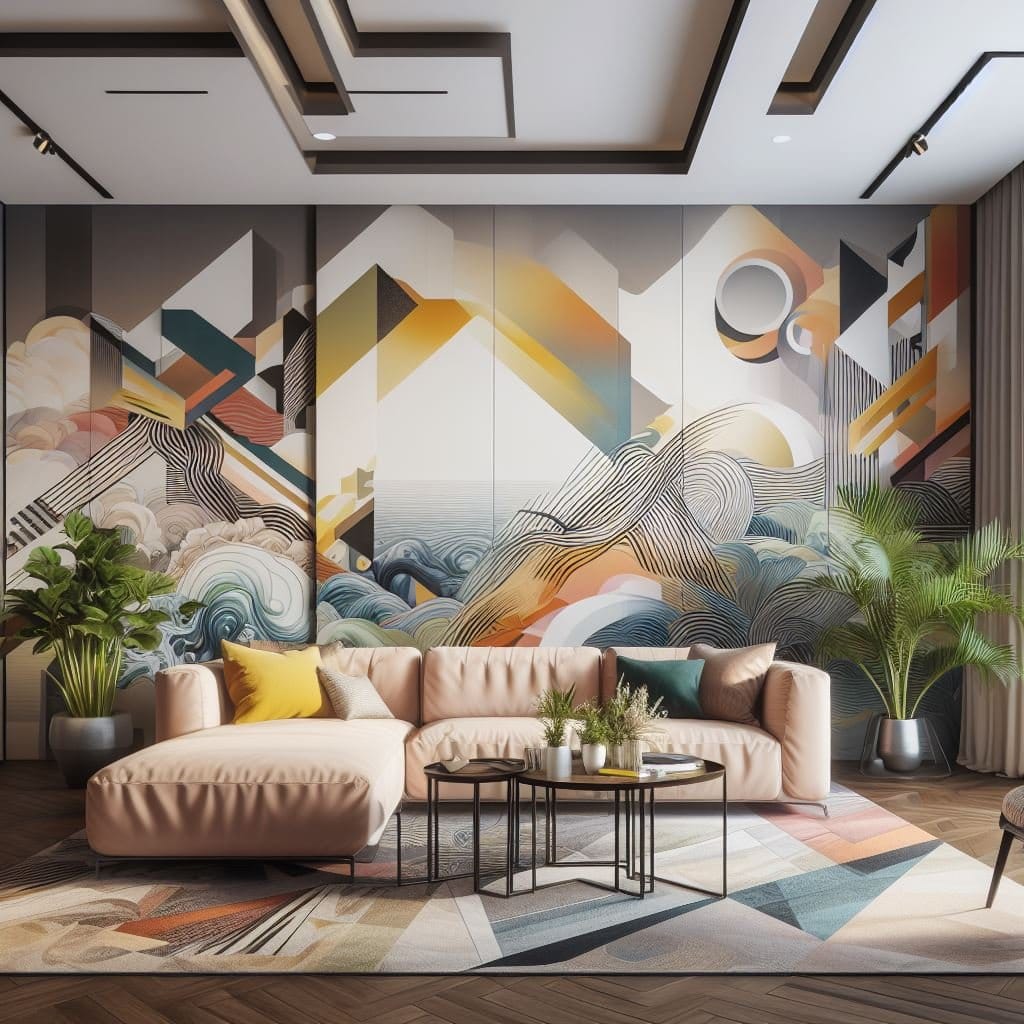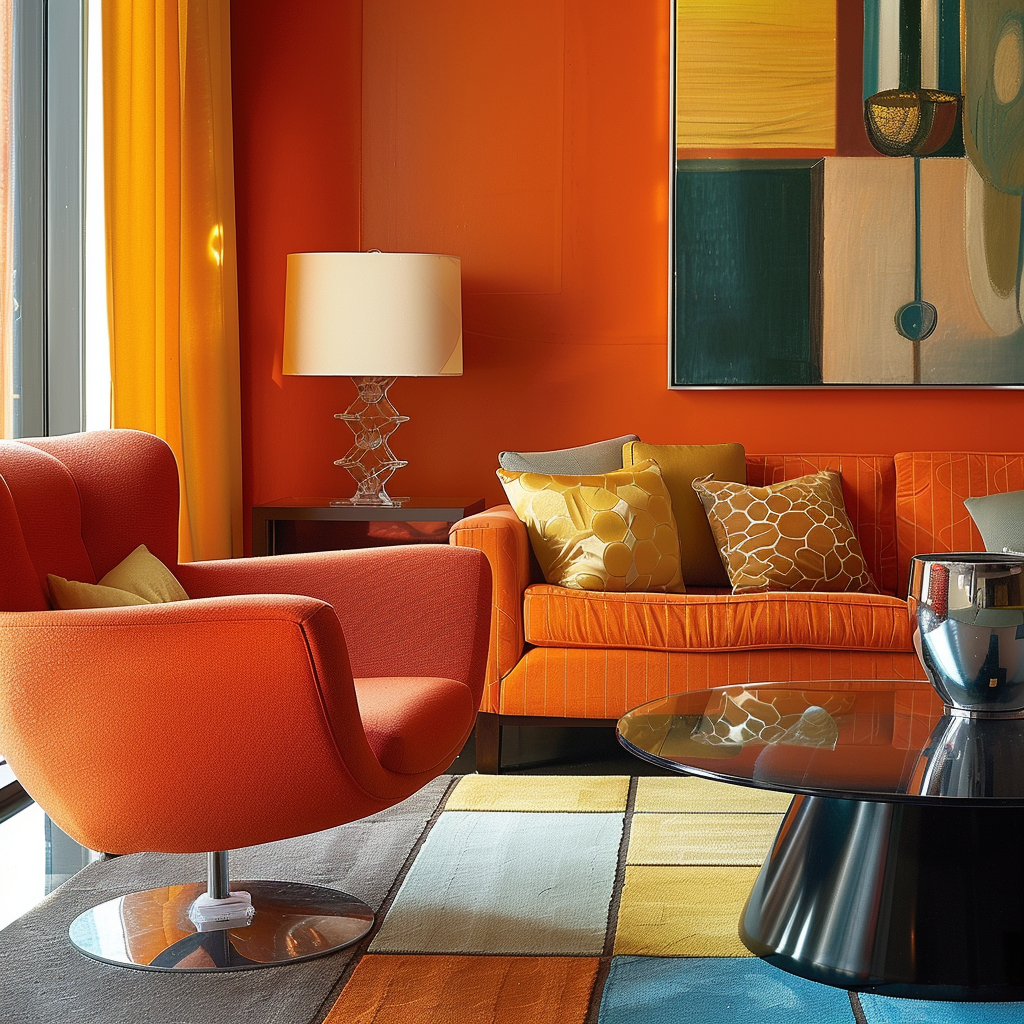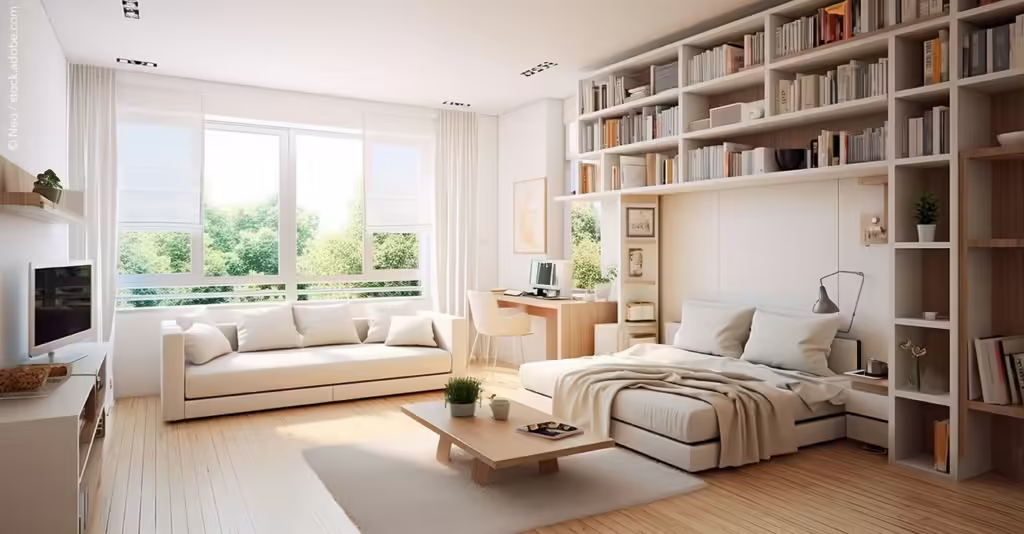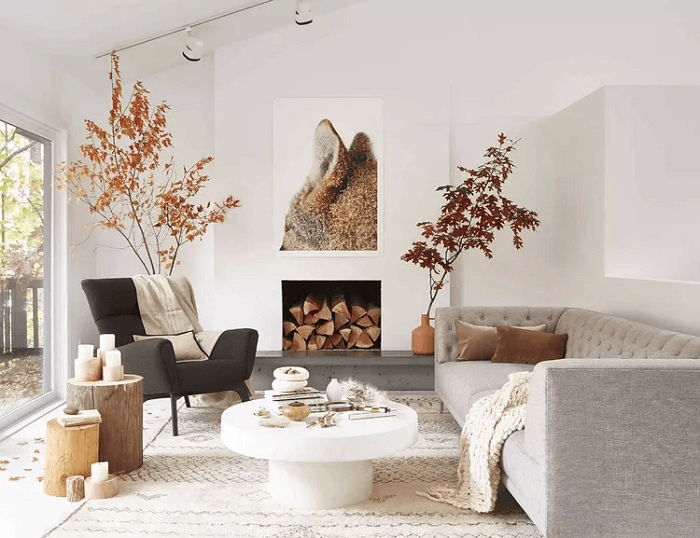Creating a personalized and functional living space is essential in today’s dynamic environment. This article explores effective strategies for incorporating sustainable materials, color palettes, and multi-functional designs into your home. By focusing on these elements, you can enhance both the aesthetic appeal and practicality of your space, ensuring it reflects your unique style while meeting your daily needs.
As you read on, you’ll discover actionable tips for making informed design choices that not only contribute to a cohesive look but also promote a more sustainable lifestyle. Learn how to curate personal touches that resonate with your experiences, creating a home that is truly yours.
Table of Contents
Creating a Harmonious Color Palette for Your Home
Choosing the right color palette for your home can significantly influence its overall vibe and feel. A harmonious color scheme not only enhances the beauty of your space but also promotes a sense of calm and well-being. In this guide, we will explore the essential principles of creating a cohesive and inviting color palette for your home.
Understanding the Color Wheel
Before diving into color selection, it’s crucial to familiarize yourself with the color wheel. This tool helps visualize how colors relate to one another. There are three primary color groups:
- Primary Colors: Red, blue, and yellow.
- Secondary Colors: Green, orange, and purple (created by mixing primary colors).
- Tertiary Colors: Colors formed by mixing primary and secondary colors, such as red-orange or blue-green.
Using the color wheel, you can explore various color combinations, including complementary, analogous, and triadic schemes. For instance, complementary colors are opposite each other on the wheel, creating vibrant contrasts, while analogous colors sit next to each other, offering softer transitions.
Establishing a Foundation Color
When creating a color palette, start with a foundation color. This is usually a neutral tone that will dominate your space and serve as the backdrop. Here are some popular options:
- Whites: Clean and versatile, whites can brighten a room and create an airy feel.
- Grays: A trendy alternative, gray can add sophistication and pairs well with various colors.
- Beige: Warm and inviting, beige offers a classic base that’s easy to build upon.
Remember that the foundation color should reflect your personality and the mood you wish to convey in your home. For a calming atmosphere, opt for cool-toned neutrals, while warmer tones create a cozy and intimate setting.
Incorporating Accent Colors
Once you’ve established your foundation, it’s time to add accent colors. These are the bolder or brighter shades that enhance your palette. When selecting accent colors, consider the following:
- Emotion: Different colors evoke various feelings; for instance, blue promotes tranquility, while yellow encourages energy.
- Balance: Use accent colors sparingly to maintain a harmonious look; one or two accent colors are generally sufficient.
- Contrast: Ensure your accents contrast well with your foundation to create visual interest.
A great way to incorporate accent colors is through decor items—think cushions, artwork, and throws. This allows for flexibility in case your tastes change in the future.
Testing Your Color Choices
Before committing to your color palette, test your selections in natural light. Colors can change dramatically based on light conditions, so securing samples and applying them to your walls is essential. Here’s how:
- Choose small swatches of your foundation and accent colors.
- Patch the colors on different walls to observe how they look at various times of the day.
- Consider using online tools or apps that allow you to visualize how different colors will look in your space.
Taking this step ensures that your final palette resonates with your vision and complements the overall style of your home.
Finding Inspiration
Finally, don’t forget to seek inspiration from other sources. Websites such as Color Harvest offer a plethora of ideas and examples of harmonious color palettes. Social media platforms like Instagram can also be a treasure trove of design inspiration—a quick search through hashtags like #interiordesign or #colorpalette can yield incredible ideas for your home.
With an understanding of the color wheel, a solid foundation color, thoughtfully chosen accents, and the right tools for testing, you can create a harmonious color palette that reflects your style and enhances the serenity of your living space.
Incorporating Sustainable Materials in Design
In today’s world, where environmental concerns are at the forefront of public discourse, incorporating sustainable materials in design has become not just a trend but a necessity. As consumers become more conscious of their ecological footprint, designers and architects are harnessing innovative materials that reflect this ethos while enhancing aesthetics and functionality. This guide explores the types of sustainable materials available, their benefits, and how they can be effectively integrated into various design projects.
Understanding Sustainable Materials
Sustainable materials are those that are sourced responsibly and promote environmental health. They are derived from resources that are renewable or have a minimal negative impact on the planet. Using these materials helps to reduce waste, conserve energy, and lower carbon footprints. Here are some categories of sustainable materials to consider:
- Bamboo: A fast-growing grass that is incredibly strong and versatile. Bamboo can be used in flooring, furniture, and decorative elements, making it a preferred choice for eco-friendly design.
- Recycled Materials: Products made from recycled content—such as glass, metals, and plastics—significantly reduce waste. Designers can create stunning decor pieces and structural elements from these resources.
- Cork: Harvested from the bark of cork trees, this renewable material is durable, water-resistant, and provides excellent insulation, making it suitable for flooring and wall coverings.
- Reclaimed Wood: Salvaged wood from old buildings or furniture gives a unique character to new designs while preventing deforestation.
- Natural Fibers: Materials such as jute, hemp, and organic cotton are biodegradable and produced with minimal impact on the environment, ideal for textiles and upholstery.
The Benefits of Using Sustainable Materials
Incorporating sustainable materials in design projects offers numerous benefits:
- Environmental Benefits: Reducing reliance on fossil fuels, minimizing waste, and conserving natural resources foster environmental stewardship.
- Healthier Indoor Spaces: Many sustainable materials are free from harmful chemicals, improving indoor air quality and promoting a healthier living environment.
- Enhanced Aesthetic Appeal: Sustainable materials often bring unique textures and colors that enhance the overall aesthetic, providing a distinct and appealing look that resonates with eco-conscious consumers.
- Cost-Effectiveness: While some sustainable materials may have a higher initial cost, their durability and low maintenance can lead to long-term savings.
Strategies for Incorporating Sustainable Materials
Here are some actionable strategies for designers looking to incorporate sustainable materials:
- Research and Source: Begin by researching local manufacturers and suppliers of sustainable materials. Platforms such as Greenbuild offer resources for identifying eco-friendly materials.
- Prioritize Customization: Encourage clients to choose bespoke designs using sustainable materials that meet their personal style while promoting sustainability.
- Embrace Modular Design: Utilize materials that allow for flexibility and easy updates, such as modular furniture or wall systems made from recycled materials.
- Educate Clients: Share information on the benefits of sustainable materials with clients to inspire their choices and foster a deeper understanding of eco-friendly design.
Conclusion
As we move towards a more sustainable future, incorporating sustainable materials in design is more critical than ever. These materials not only contribute to environmental wellness but also enhance the overall aesthetics and functionality of any space. By prioritizing sustainability in design, creators can create beautiful, innovative spaces that resonate with conscious consumers.
Embracing Multi-Functional Spaces for Modern Living
In today’s fast-paced world, the demand for multi-functional spaces has surged dramatically. As more people seek flexibility in their living environments, the traditional boundaries of dedicated rooms are being redefined. This article explores the importance of multi-functional spaces in modern living, focusing on creative design strategies, practical tips, and the emotional benefits of adaptable environments.
The Rise of Multi-Functional Living
With urbanization and the increasing number of remote workers, our homes need to do more than just shelter us; they must accommodate a variety of activities—working, exercising, entertaining, and even relaxing. This evolution highlights a significant trend toward spaces designed with multiple uses in mind. Multi-functional living can make smaller homes feel larger and optimize the use of available square footage.
Design Strategies for Multi-Functional Spaces
To create effective multi-functional spaces, consider the following design strategies:
- Flexible Furniture: Invest in furniture that can serve multiple purposes. For example, a sofa bed transforms a living room into a guest suite, while a coffee table with storage can reduce clutter.
- Modular Layouts: Use modular furniture that can be rearranged or expanded easily to accommodate various activities, whether you’re hosting a gathering or simply enjoying family time.
- Use of Dividers: Employ dividers such as bookshelves, curtains, or screens to create distinct areas within a single room. This can provide privacy when needed and maintain an open feel.
- Integrated Technology: Smart home technology enhances flexibility, allowing you to adjust lighting, temperature, and entertainment settings with ease, accommodating different moods and activities.
The Psychological Benefits of Adaptable Spaces
Beyond practicality, multi-functional spaces offer significant psychological advantages. Environments that adapt to our needs can lead to increased feelings of control and well-being. Here’s how:
- Reduced Stress: An organized, adaptable home minimizes the chaos of daily life. Knowing that your home can cater to your various needs makes it a peaceful place.
- Enhanced Creativity: Multi-functional spaces encourage creativity by inspiring new ways to use familiar environments. For instance, converting a home office into a hobby space can help spark new ideas.
- Family Cohesion: Shared spaces foster interaction among family members. When the living room can serve as a workspace, game area, or movie night zone, it strengthens family bonds through shared experiences.
Real-Life Examples of Multi-Functional Spaces
Numerous innovators in the design industry are setting trends with their multi-functional homes. For instance, the Instagram account of Jenni Ross showcases various transformations that maximize space and function in her home renovation projects. From collapsible furniture to cleverly designed nooks, Jenni provides inspiration for those looking to create flexible living solutions.
Additionally, designers like Vera Chamberlin emphasize the use of color, materials, and design layouts to ensure spaces can adapt seamlessly for different functions. Her approach highlights how style does not need to be sacrificed for versatility.
Getting Started with Your Own Multi-Functional Space
As you begin to transform your home into a hub of multi-functionality, consider these practical tips:
- Assess Your Needs: Think deeply about your daily activities and which spaces require adaptability. Focus on areas that need to serve more than one purpose.
- Prioritize Quality: Choose quality, durable items that will withstand frequent changes in use. Investing in reliable furniture and decor can save you money in the long run.
- Iterate and Adapt: Flexibility is key. Remain open to testing new arrangements and functionalities within your spaces until you find what works best for you and your lifestyle.
Embracing multi-functional spaces isn’t just a necessity of modern living; it is an opportunity to redefine how we interact with our environments. As you navigate your design journey, remain inspired by innovative approaches to space utilization and the endless possibilities that arise when function meets style.
Curating Personal Touches for Authentic Expression
Creating a home that truly reflects your personality can transform the entire living experience. Personal touches not only enhance the aesthetic appeal but also foster a sense of comfort and belonging. Curating these elements requires thoughtful consideration of your unique experiences, interests, and style. Here, we explore effective strategies to help you personalize your spaces for authentic self-expression.
Understanding the Power of Personalization
In a world filled with mass-produced decor, embracing the idea of personalization stands out as a profound approach to design. Personalization allows you to replace the generic with the **genuine**, showcasing stories that resonate with your life journey. Whether it’s a cherished memory, a hobby, or a cultural artifact, these elements contribute to a narrative that is distinctly yours.
Incorporating Meaningful Artwork
Art is a powerful medium for expressing identity. When selecting artwork for your home, consider pieces that speak to your heart, invite conversation, or evoke treasured memories.
- Local Artists: Support local talent by purchasing artwork from nearby galleries or art shows. These pieces not only enhance your space but also tell a story about the local culture.
- DIY Creations: Channel your creativity by creating your own art. Whether through painting, photography, or crafts, these personal creations can add a deeply personal touch.
- Inherited Pieces: Incorporate artworks or crafts handed down through generations. These pieces can serve as conversation starters and are often imbued with rich family histories.
Showcasing Travel Memories
Traveling offers unique opportunities to collect experiences and mementos. Displaying travel souvenirs in your home can provide a continuous reminder of adventures and experiences that have shaped who you are.
- Shadow Boxes: Create shadow boxes for displaying trinkets from your travels—like shells, postcards, or small cultural artifacts. This playful approach protects your souvenirs while showcasing them artistically.
- Maps and Itineraries: Use world maps or itineraries from significant trips as decorative elements. You can frame them or use them to cover a feature wall, making it an interactive and engaging piece of decor.
Curating Personalized Collections
Collections can express personal interests or passions. Whether it’s vintage vinyl records, books, or pottery, curating collections adds depth to your decor and allows for storytelling through your chosen items.
- Display Techniques: Use shelves, shadow boxes, or open cabinets to thoughtfully display collections while maintaining an organized look.
- Rotating Displays: Consider rotating your collection seasonally to keep your space feeling fresh and give each item the spotlight it deserves.
Creating Distinctive Spaces with Personal Significance
Designing spaces within your home that cater specifically to your needs and passions enhances personal expression. Consider these suggestions:
- Reading Nook: If you love books, set up a cozy reading corner filled with your favorite titles and comfortable seating.
- Hobby Space: Designate an area for your hobbies, whether it’s crafting, music, or cooking. Personalize it with tools, materials, and decor that inspire your creativity.
Infusing Personal Style into Color and Texture
Your choice of color palette and textures can also reflect your personality. Explore how these elements can enhance your personal expression:
- Color Psychology: Select colors that resonate with your emotions. For instance, soft blues can evoke tranquility, while vibrant reds might stir energy.
- Texture Varieties: Combine various textures like soft fabrics, wood, and metal to create a tactile and visually engaging environment unique to your tastes.
Celebrating Milestones with Custom Furnishings
Investing in custom or bespoke pieces can further solidify your personal narrative in your home. Custom furniture, crafted with your specifications, often ties wonderfully with personal milestones or passions.
- Custom Sofas: Design a sofa tailored to your space, choosing materials and colors that reflect your style.
- Unique Pieces: Work with local artisans to create special pieces, from dining tables that cater to family gatherings to chairs that encapsulate comfort and style.
By thoughtfully curating personal touches throughout your home, you cultivate an environment that not only expresses your personality but also comforts and inspires you daily. For further guidance on integrating personal touches into your design, explore [The Spruce’s Home Decor Ideas](https://www.thespruce.com/home-decor-ideas-4841013) to discover inspiration tailored to your taste and lifestyle.
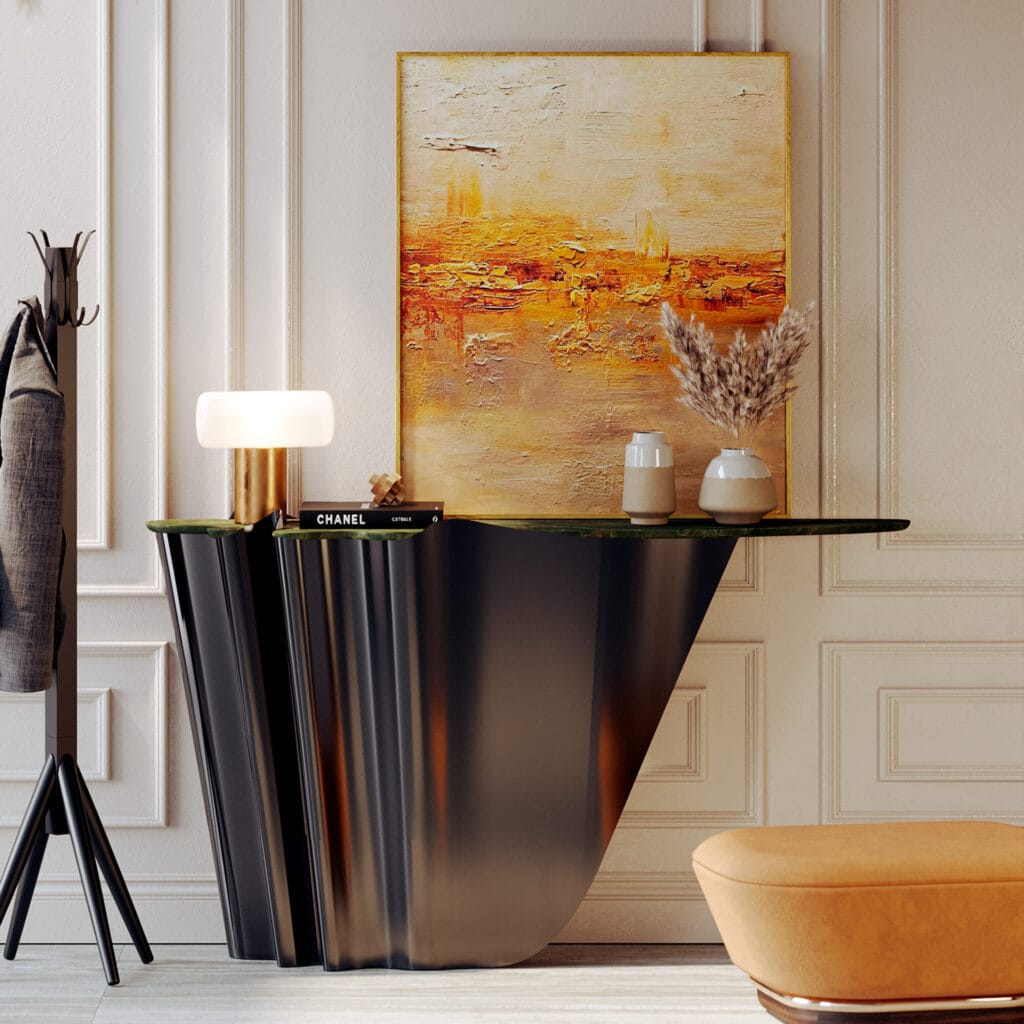
Incorporating sustainable materials in design is essential for creating environmentally friendly spaces while enhancing aesthetics and functionality. Sustainable materials, such as bamboo, recycled content, cork, reclaimed wood, and natural fibers, not only reduce ecological footprints but also contribute to healthier indoor environments. Designers are encouraged to research local sources, prioritize customizable options, and educate clients on the benefits of eco-friendly materials.
To create personal and authentic living spaces, focus on integrating meaningful artwork, showcasing travel memories, and curating unique collections that reflect your interests. Consider designing distinctive areas like reading nooks or hobby spaces, and use color and texture to convey your personality. Investing in custom furnishings tailored to your preferences can further enhance the sense of personal connection in your home.


